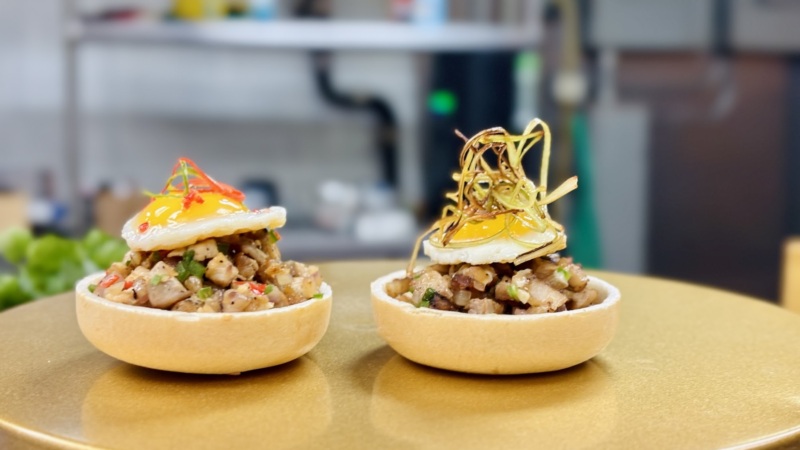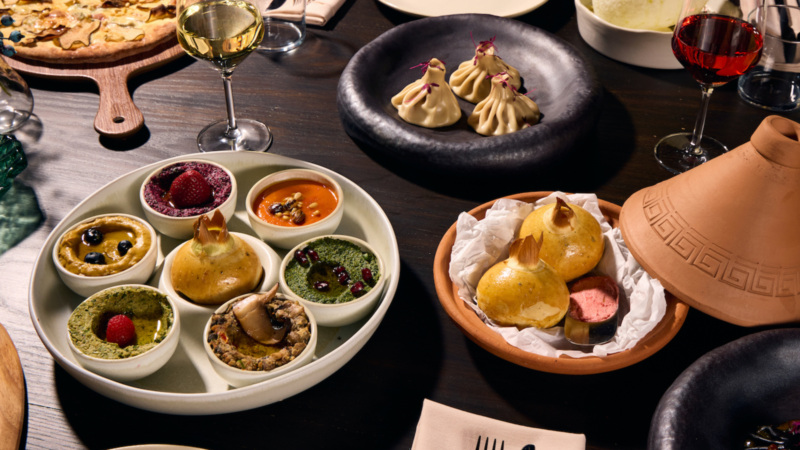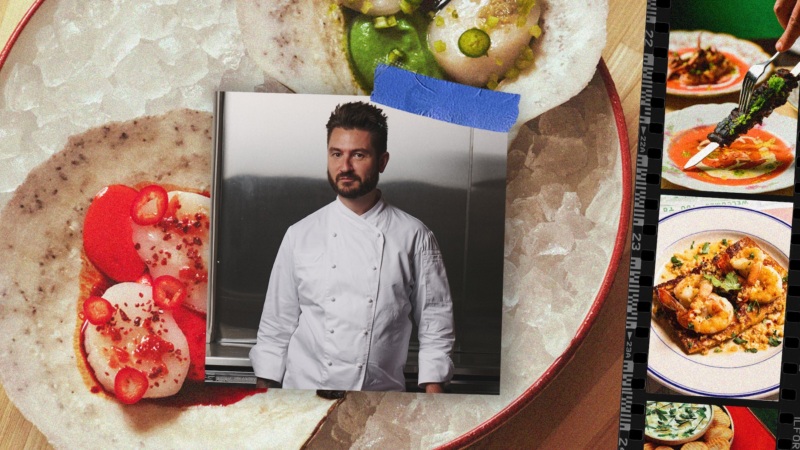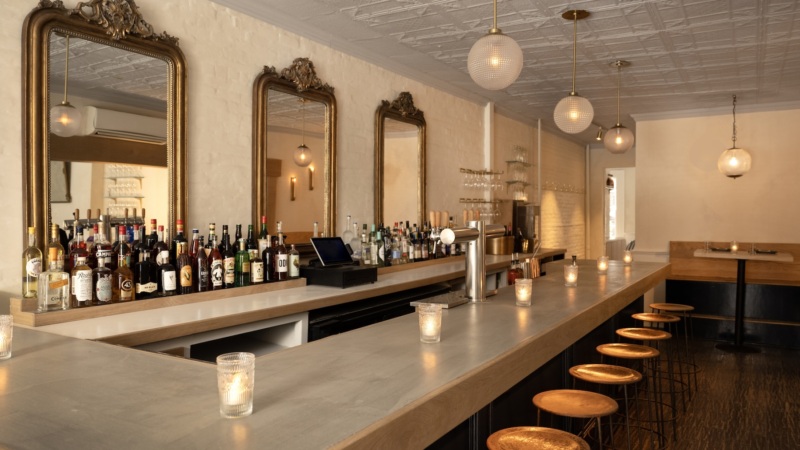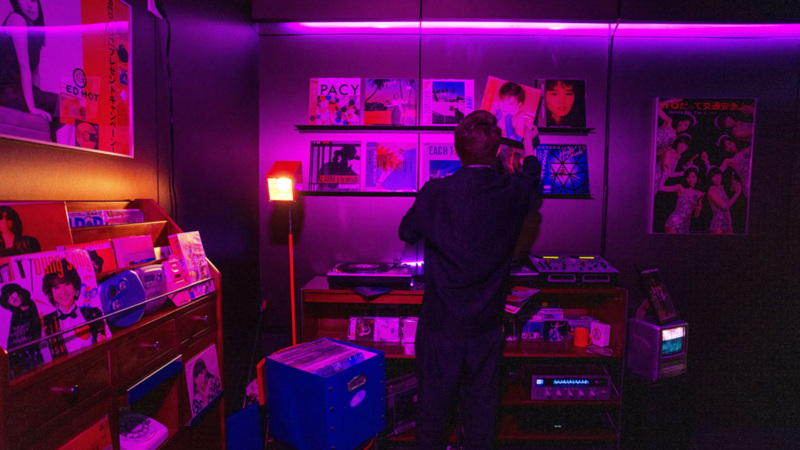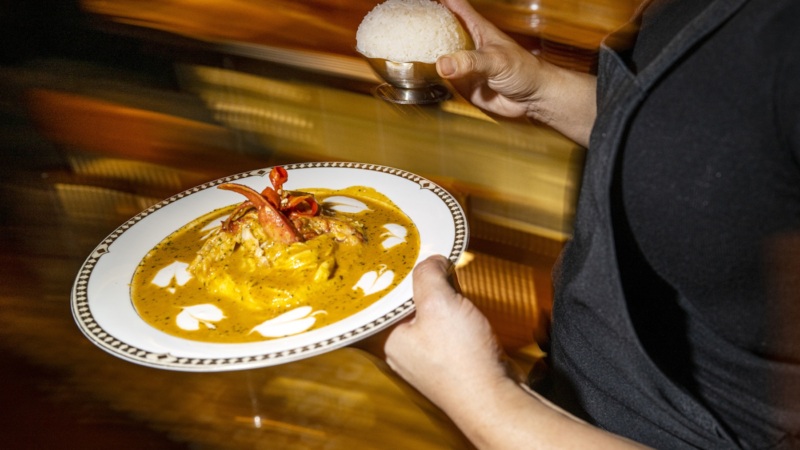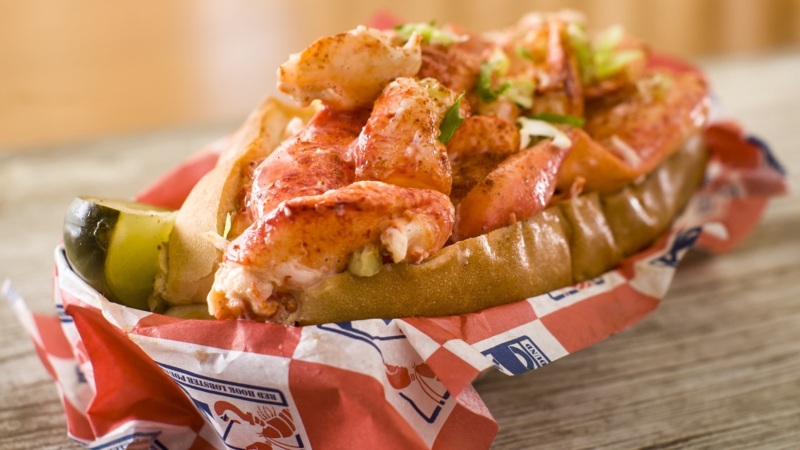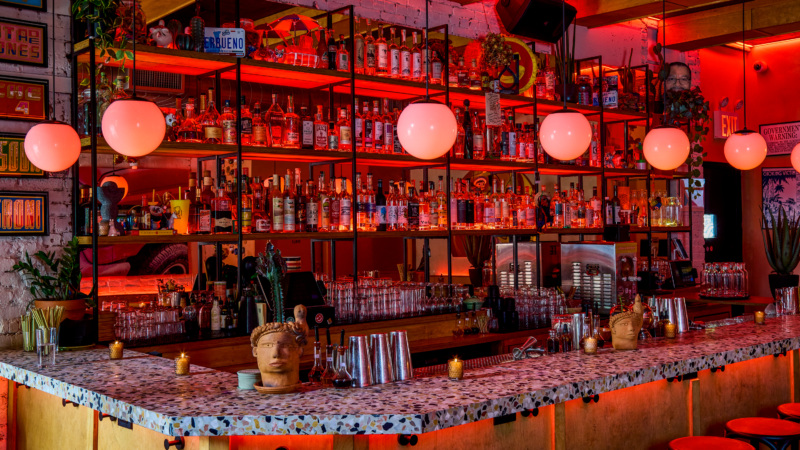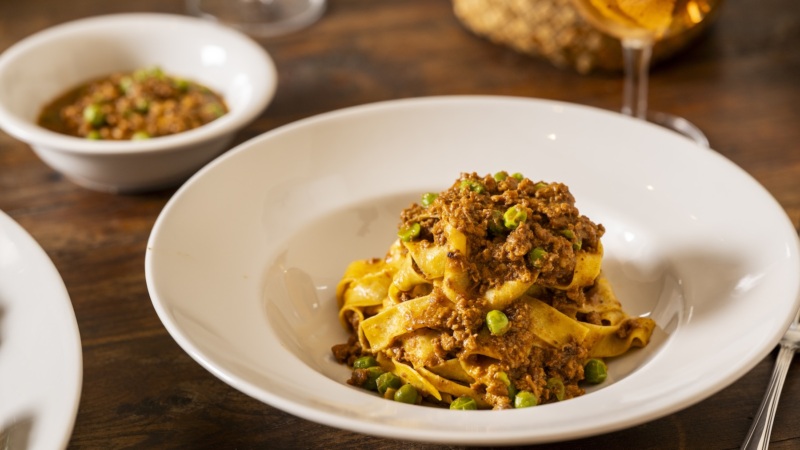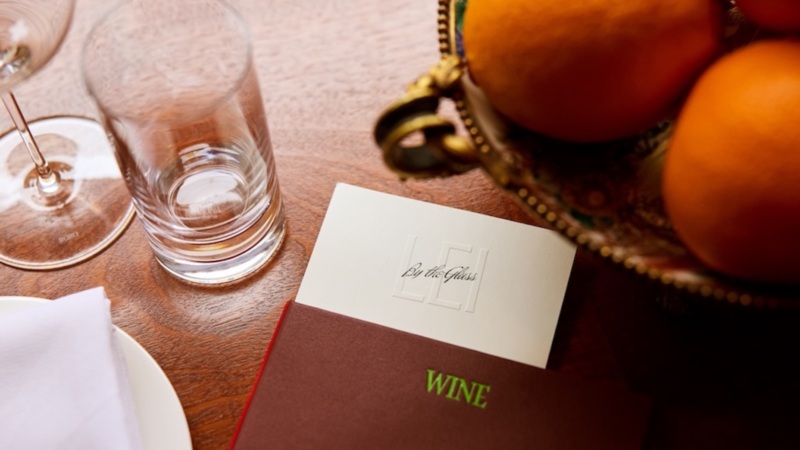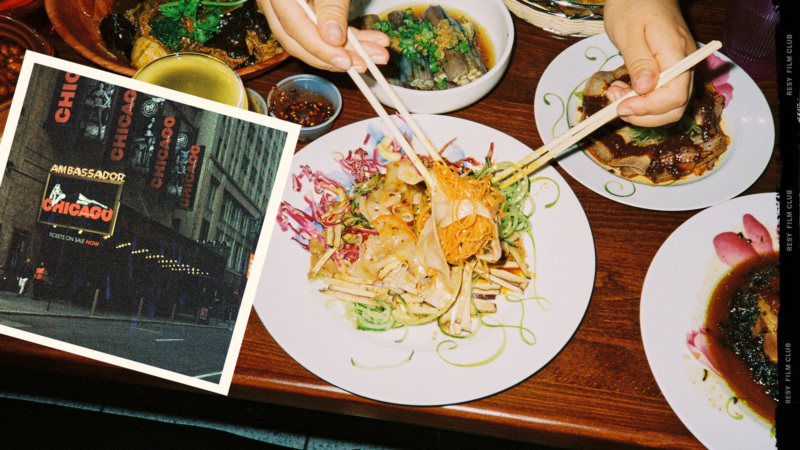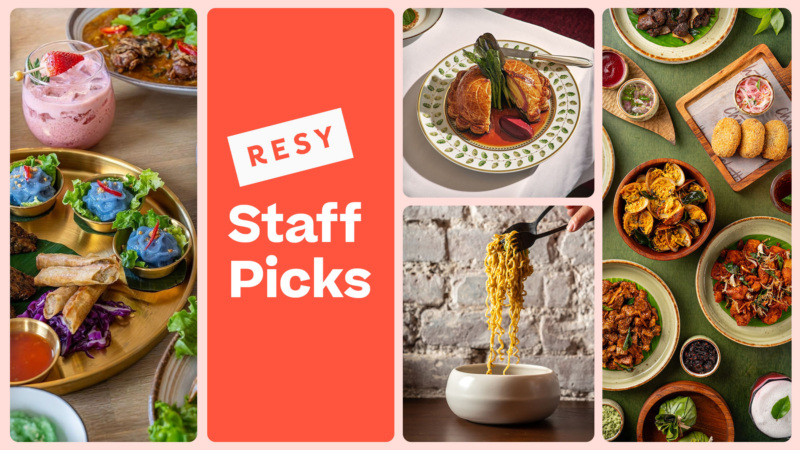
Everything You Need to Know About Dame, Now Open in Manhattan
Before you go to a new restaurant, what do you want — or need — to know most? In our series, The Rundown, we’re sharing all the essentials about newly opened and essential spots.
This time out: Dame in Greenwich Village from chef Ed Szymanski and co-owner Patricia Howard, which built buzz as a pop-up last summer, and opened as a full-service restaurant on June 1. Here’s everything you need to know.
1. Dame is first and foremost a seafood restaurant.
You might know Chef Ed Szymanski from his time at Cherry Point, a meat-focused English restaurant in Greenpoint. Dame, he says, marks “a complete shift change” to seafood, while he continues to push back against narrow American conceptions of English food.
“In the States, people will just call all English restaurants gastropubs,” he says. “We’re more of a seafood restaurant than an English restaurant, it just so happens that I’m English and it informs my cooking.”
In addition to their much-buzzed about fish and chips, the menu includes a version of kedgeree — an Anglo-Indian dish of smoked fish, rice, and hard-boiled eggs — that harnesses sea urchin, plus a lobster tart served in a vol-au-vent with morel mushrooms, snap peas, and chervil. Some of Syzmanski’s other favorites include smoked whitefish croquettes, and cucumbers served with blue mussels and a smoked mussel emulsion. “That dish sums up our ethos of using everything we have,” he says.
And while the inspiration might be English, Szymanski and his team are working with local ingredients — fish from Montauk, oysters from Maine. Dame’s Englishness, Szymanski says, is “not necessarily obvious when you go, like there’s not toad-in-the hole. But there is an Eton mess, and there’ll be summer puddings.”
- The June Hit List: Dame, Fulgurances, Jolene, Mockingbird, and More
- What to Order at New York’s Top Cocktail Bars, According to the Bartenders
- Winona’s Opened Mid-Pandemic. Being Flexible Became Its Identity.
- ‘As Long as Sylvia’s is Open, the Marquee Will be Lit.’ How the Harlem Legend Has Endured
- The Wine Hit List, Early Summer Edition: Estadio, Apéro, Dauphine, and More
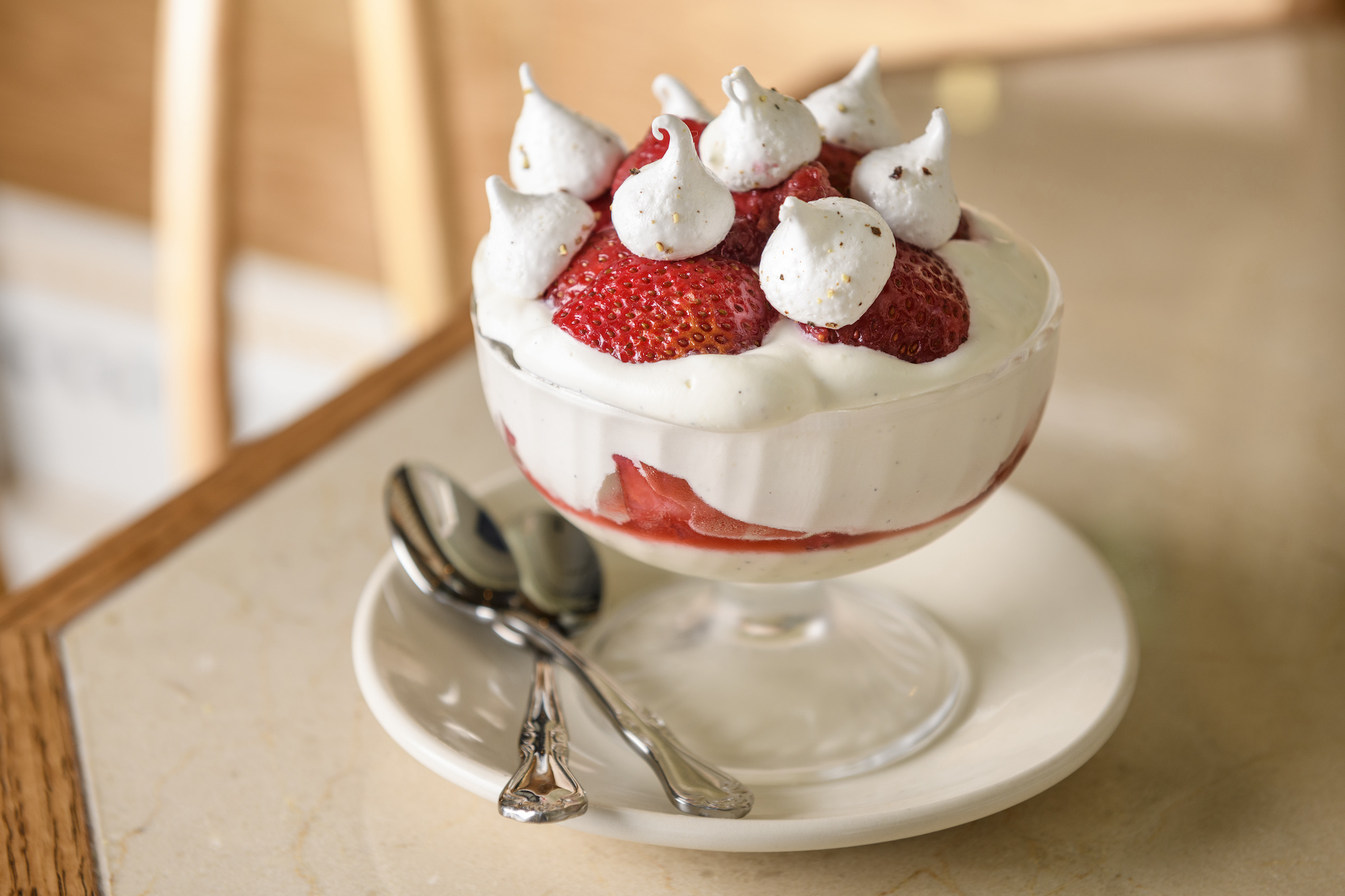

2. The name is partially inspired by Dames Helen Mirren and Judi Dench.
The restaurant’s name comes in part from the English phrase, “the dame of the street,” which refers to a restaurant or establishment that’s been around for a long time. But, Szymanski adds, another factor was that “Helen Mirren and Judi Dench deserve to have restaurants named after them somewhere.” (In the Village, apparently.) And the term dame encompasses much of what he and Howard want the restaurant to be: “a sort of refined but playful elderly English lady.”
The interior design reflects that playful elegance. Szymanski and Howard got lucky when the space next to their pop-up became available, but as a former Japanese izakaya, its interiors were much darker than what they envisioned. They worked with designer Anna Polonsky and her husband, the chef and ceramicist Fernando Aciar, to whitewash the previously dark brick walls, strip the dark wood floor, and add navy accents. “We wanted a classic, fairly simple space that didn’t feel overly designed,” Howard says.
3. For more evidence of that playful spirit? Check the wine list.
For a tiny restaurant — its interior is only 450 square feet — Dame boasts an extensive wine selection, one that mirror’s the restaurant’s playful spirit.
“This is not a serious restaurant,” Szymanski says. “We’re in our twenties, I’m cooking in shorts, the playlist is disco. We don’t want to be too serious and that’s reflected in the wine list, but we do want to show some depth.”
Hence the list’s organizing principle is “What Austin Powers is Drinking” and “What James Bond is Drinking.” As you might imagine, the Austin Powers side is focused on less common varieties and producers (from the Czech Republic to Texas) and more, er, shagadelic wines. “I think Austin Powers would drink pét-nat. The expensive white Burgundy is on the James Bond side,” Syzmanski says. “I hope we turn into a wine destination late at night, where people come at 10 and hang out and drink wine and snack, and we can show off all these bottles.”
4. The hit Sunday Series will continue, but with guests from further afield.
Last summer, Dame ran a wildly successful Sunday Series, inviting their industry friends to take over the kitchen and bar, and donating all profits to a charity of the guest chef’s choice. Szymanski says he plans to restart the series in July, and hopes to expand the network of contributors. “Now that we have a permanent restaurant space, I can bring some friends of mine who have Michelin-star restaurants in London and wouldn’t just come and cook for a Sunday on paper plates,” he says.
That said, elevating “up-and-coming New York chefs” will also still be part of the mission. “Sous chefs, line cooks who are about to make the jump into opening their own restaurant will do the Sunday series.”

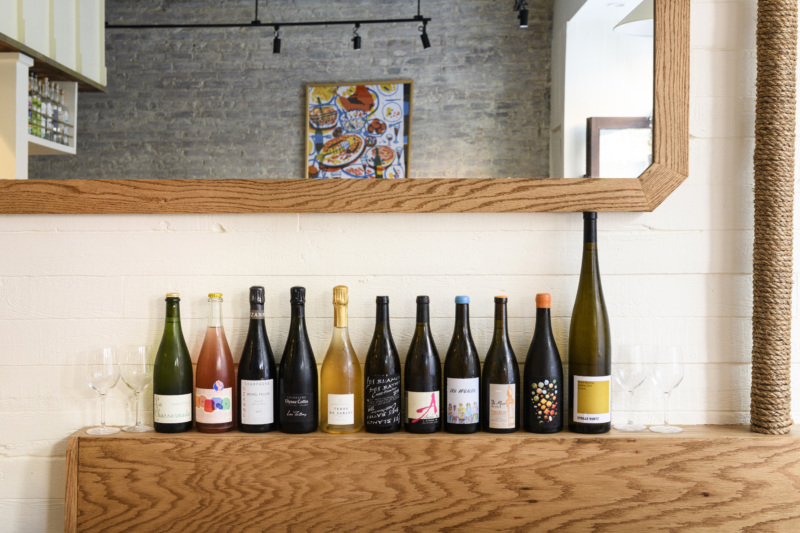
5. There’s not a traditional front-of-house staff.
In order to ensure that their nine-person staff is paid fairly, Szymanski and Howard have ditched the front-of-house, back-of-house model. Instead, the kitchen is involved in all elements of the front-of-house, which brings them into the tip pool. “The line cook at Dame is making between $30 and $40 a hour, which is more than any other business could afford without including tips,” Szymanski says. “The common refrain that other restaurants told us when we were doing this was, if your line cook’s serving a customer, they might not know to pour wine on the right side, or they might not be good at folding a napkin. To which I say, I really don’t give a f***, if it means they get paid a lot better.”
Beyond the financial benefits of this system, Szymanski and Howard want Dame to become a place where all staff get the experience they need to continue developing their careers. “It’s good to learn the front-of-house stuff if they one day have aspirations of opening their own place.” And, as Howard adds, from a practical perspective, having everyone know how to do everything makes the the restaurant run smoother. “If the kitchen hasn’t started cooking tickets yet, because people are getting seated at six o’clock, and our line cook knows how to make a cocktail, that only helps everyone,” she says. “A lot of restaurants say they’re all a team, they’re all a family. But if everyone really is sharing the tips evenly and making the same wage, we hope it creates that environment.”
Lauren Vespoli is a New York-based freelance journalist who has contributed to The New York Times, Vox, Atlas Obscura, and more. Follow her on Twitter. Follow Resy, too.


